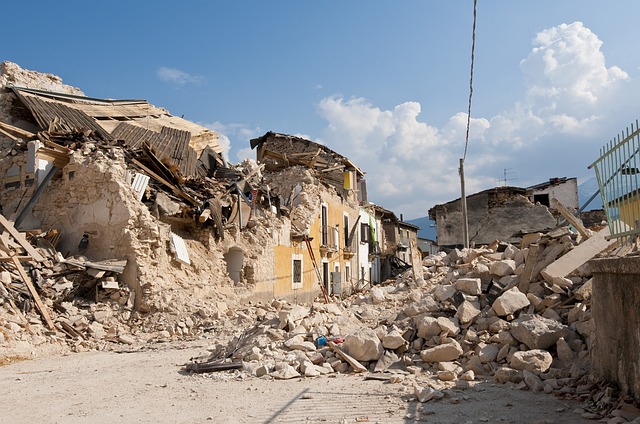It can be hard to think of anything positive when it comes to earthquakes; earthquakes are caused by the sudden friction and pressure developing between various tectonic plates. And as these plates give way and slide under each other, often resulting in a tremendous amount of energy that can flatten buildings, level skyscrapers, break apart flyovers and in general cause widespread destruction. But as hard as it may be to believe, earthquakes can also have a beneficial effect, and that’s why it is important that we examine the positive and negative effects of earthquakes.

Positive impact of earthquakes:
- Active geology: Without earthquakes and an active geological earth to generate the required magma, it is debatable whether there would be any land mass on the planet. It is primarily due to tectonic movements that land had been lifted from the seabed and the reason why we have the various continents. Without earthquakes and an active geology, the earth may as well be a dead planet. Furthermore, it should be pointed out that as the magma pushes out and causes the tectonic plates to grind against each other, it releases various minerals which are essential for a vibrant ecosystem.
- Geothermal vents: It was recently discovered that geothermal vents were often located close to fault lines on the earth and on the seabed. These vents are powered by active geological actions taking place under the crust and often act as an exhaust, releasing various gases and minerals into the surrounding environment. This process enriches the surrounding area and adds a further component to the argument that earthquakes can be beneficial as well (within reason).
- Mining: While large earthquakes take place once every few months, depending on the pressure built on the tectonic plates – smaller earthquakes happen more frequently, often daily. Scientists studying these earthquakes can now measure the depth and range of the P and S wave formations and even decipher the various materials that they pass through. Based on the same premise, various mining companies artificially create small earthquakes by placing explosives and studying the pattern to identify the materials under the crust. This has proved to be quite effective as it enables the mining company to mine the required materials more efficiently.
Negative impact of earthquakes:
- Widespread destruction: Earthquakes can cause widespread destruction and if that was not enough, they can also generate tsunamis which only further devastate the concerned region, the perfect example of the same would be the 2011 Tohoku earthquake off the coast of Japan which generated a massive tsunami that resulted in widespread destruction, and loss of life. The earthquake was of 9.1 magnitudes which devastated life on all of Japan.
- Loss of life: The problem though is that there is no reasonable way for us to accurately measure the pressure building on the tectonic plates and that we can at best, make an educated guess. There are various locations that are highly prone to earthquakes and these areas often had to face massive earthquakes in the recent past. One such example would be California as it is located right on the edge of the San Andreas plate and is highly prone to earthquakes. The last massive earthquake to hit this region was nearly a century back and resulted in the death of more than 50% of the local population. The 2008 earthquake was generated off the coast of Indonesia, and even though the quake initially did not result in many fatalities, the resultant tsunami and aftershocks devastated Indonesia, India and other nations around the rim and caused over 280000 fatalities.
- Cost: earthquakes can level towns and can cause widespread damage. This is why the cost of rebuilding the town from scratch can run into several million and even billions.
These are some of the positive and negative effects of earthquakes and that’s why it is important that we teach our children what to do in case of an earthquake. It is important that we impart safety messages and enjoin the local population to take preventive measures such as building shelters that can withstand earthquakes and provide others with protection. Granted, it may not be possible to predict an earthquake at the moment, but we can at least adopt a few preventive measures that can help minimize the danger to our lives and our livelihood.
- Tulip Mania – The Story of One of History’s Worst Financial Bubbles - May 15, 2022
- The True Story of Rapunzel - February 22, 2022
- The Blue Fugates: A Kentucky Family Born with Blue Skin - August 17, 2021
